Hexin Bai
Graph Transformer Networks for Accurate Band Structure Prediction: An End-to-End Approach
Nov 25, 2024



Abstract:Predicting electronic band structures from crystal structures is crucial for understanding structure-property correlations in materials science. First-principles approaches are accurate but computationally intensive. Recent years, machine learning (ML) has been extensively applied to this field, while existing ML models predominantly focus on band gap predictions or indirect band structure estimation via solving predicted Hamiltonians. An end-to-end model to predict band structure accurately and efficiently is still lacking. Here, we introduce a graph Transformer-based end-to-end approach that directly predicts band structures from crystal structures with high accuracy. Our method leverages the continuity of the k-path and treat continuous bands as a sequence. We demonstrate that our model not only provides accurate band structure predictions but also can derive other properties (such as band gap, band center, and band dispersion) with high accuracy. We verify the model performance on large and diverse datasets.
GMOT-40: A Benchmark for Generic Multiple Object Tracking
Dec 02, 2020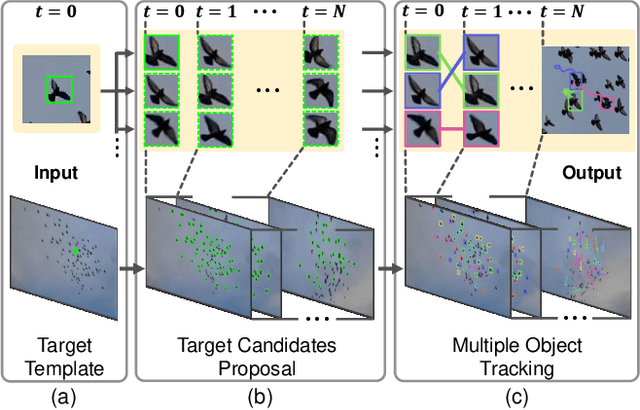
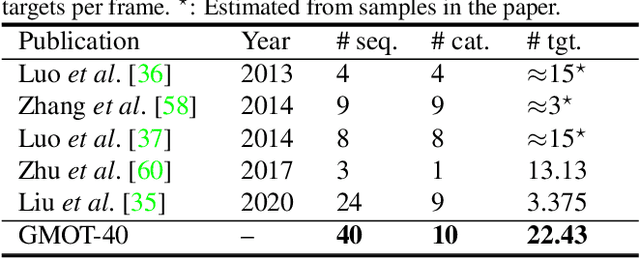
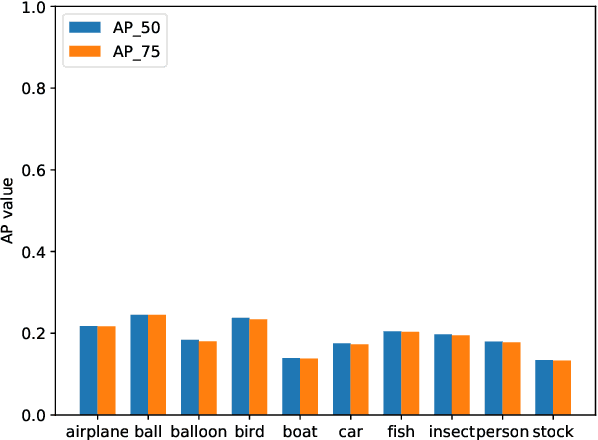
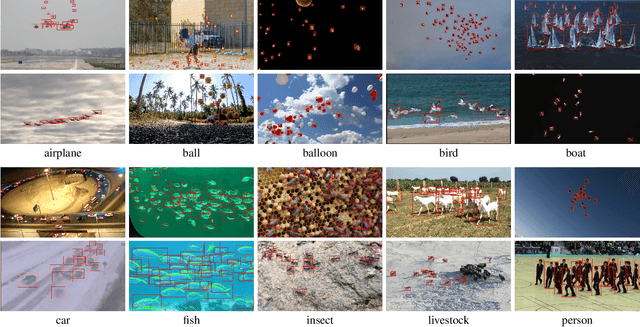
Abstract:Multiple Object Tracking (MOT) has witnessed remarkable advances in recent years. However, existing studies dominantly request prior knowledge of the tracking target, and hence may not generalize well to unseen categories. In contrast, Generic Multiple Object Tracking (GMOT), which requires little prior information about the target, is largely under-explored. In this paper, we make contributions to boost the study of GMOT in three aspects. First, we construct the first public GMOT dataset, dubbed GMOT-40, which contains 40 carefully annotated sequences evenly distributed among 10 object categories. In addition, two tracking protocols are adopted to evaluate different characteristics of tracking algorithms. Second, by noting the lack of devoted tracking algorithms, we have designed a series of baseline GMOT algorithms. Third, we perform a thorough evaluation on GMOT-40, involving popular MOT algorithms (with necessary modifications) and the proposed baselines. We will release the GMOT-40 benchmark, the evaluation results, as well as the baseline algorithm to the public upon the publication of the paper.
LaSOT: A High-quality Large-scale Single Object Tracking Benchmark
Sep 12, 2020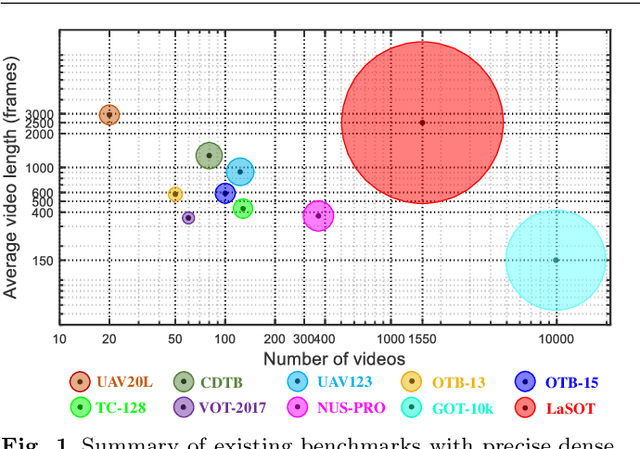
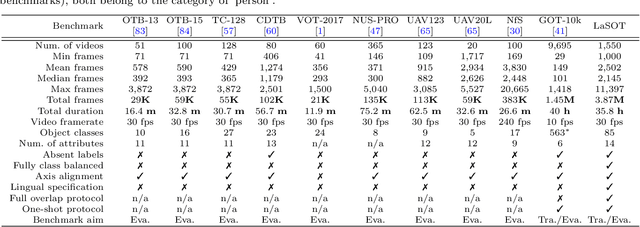
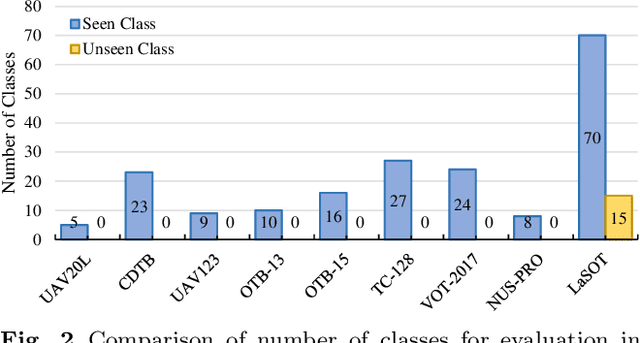
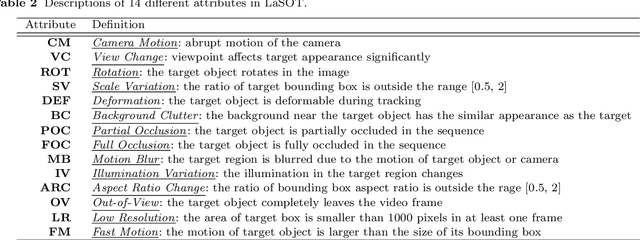
Abstract:Despite great recent advances in visual tracking, its further development, including both algorithm design and evaluation, is limited due to lack of dedicated large-scale benchmarks. To address this problem, we present LaSOT, a high-quality Large-scale Single Object Tracking benchmark. LaSOT contains a diverse selection of 85 object classes, and offers 1,550 totaling more than 3.87 million frames. Each video frame is carefully and manually annotated with a bounding box. This makes LaSOT, to our knowledge, the largest densely annotated tracking benchmark. Our goal in releasing LaSOT is to provide a dedicated high quality platform for both training and evaluation of trackers. The average video length of LaSOT is around 2,500 frames, where each video contains various challenge factors that exist in real world video footage,such as the targets disappearing and re-appearing. These longer video lengths allow for the assessment of long-term trackers. To take advantage of the close connection between visual appearance and natural language, we provide language specification for each video in LaSOT. We believe such additions will allow for future research to use linguistic features to improve tracking. Two protocols, full-overlap and one-shot, are designated for flexible assessment of trackers. We extensively evaluate 48 baseline trackers on LaSOT with in-depth analysis, and results reveal that there still exists significant room for improvement. The complete benchmark, tracking results as well as analysis are available at http://vision.cs.stonybrook.edu/~lasot/.
Graph Neural Network for Hamiltonian-Based Material Property Prediction
May 27, 2020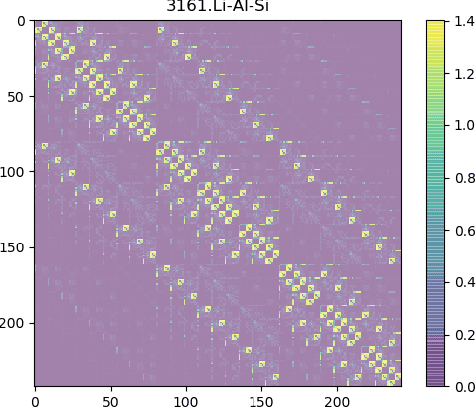


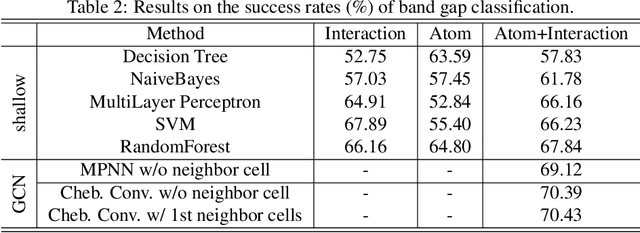
Abstract:Development of next-generation electronic devices for applications call for the discovery of quantum materials hosting novel electronic, magnetic, and topological properties. Traditional electronic structure methods require expensive computation time and memory consumption, thus a fast and accurate prediction model is desired with increasing importance. Representing the interactions among atomic orbitals in any material, a material Hamiltonian provides all the essential elements that control the structure-property correlations in inorganic compounds. Effective learning of material Hamiltonian by developing machine learning methodologies therefore offers a transformative approach to accelerate the discovery and design of quantum materials. With this motivation, we present and compare several different graph convolution networks that are able to predict the band gap for inorganic materials. The models are developed to incorporate two different features: the information of each orbital itself and the interaction between each other. The information of each orbital includes the name, relative coordinates with respect to the center of super cell and the atom number, while the interaction between orbitals are represented by the Hamiltonian matrix. The results show that our model can get a promising prediction accuracy with cross-validation.
LaSOT: A High-quality Benchmark for Large-scale Single Object Tracking
Sep 20, 2018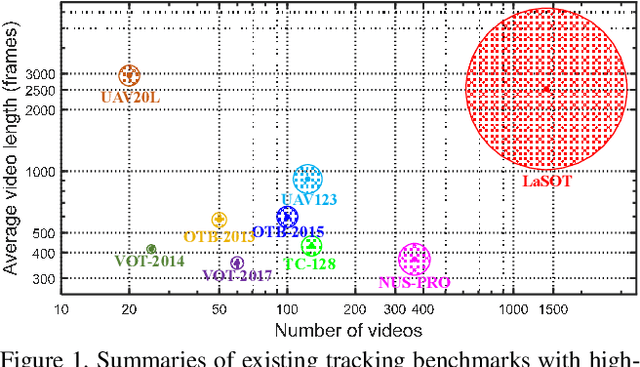

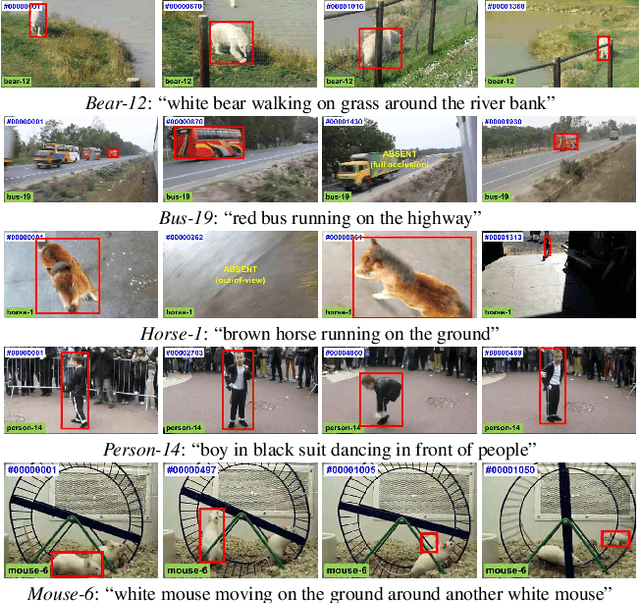
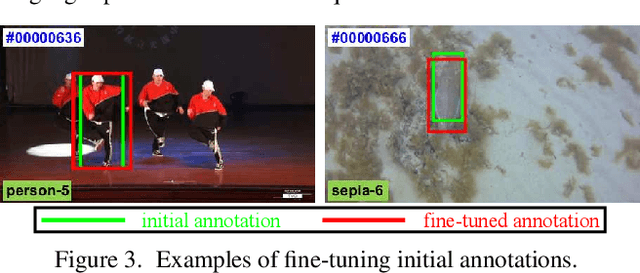
Abstract:In this paper, we present LaSOT, a high-quality benchmark for Large-scale Single Object Tracking. LaSOT consists of 1,400 sequences with more than 3.5M frames in total. Each frame in these sequences is carefully and manually annotated with a bounding box, making LaSOT the largest, to the best of our knowledge, densely annotated tracking benchmark. The average sequence length of LaSOT is more than 2,500 frames, and each sequence comprises various challenges deriving from the wild where target objects may disappear and re-appear again in the view. By releasing LaSOT, we expect to provide the community a large-scale dedicated benchmark with high-quality for both the training of deep trackers and the veritable evaluation of tracking algorithms. Moreover, considering the close connections of visual appearance and natural language, we enrich LaSOT by providing additional language specification, aiming at encouraging the exploration of natural linguistic feature for tracking. A thorough experimental evaluation of 35 tracking algorithms on LaSOT is presented with detailed analysis, and the results demonstrate that there is still a big room to improvements. The benchmark and evaluation results are made publicly available at https://cis.temple.edu/lasot/.
 Add to Chrome
Add to Chrome Add to Firefox
Add to Firefox Add to Edge
Add to Edge